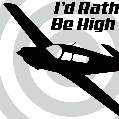Does CG and loading cause a wing drop?
-
Members Online
- Tom F
- tls pilot
- FoxMike
- philiplane
- pinkiedog64
- atpdave
- Crawfish
- Chris B
- Bob E
- Ibra
- Andy95W
- Mark Staggs
- redbaron1982
- 1980Mooney
- bluehighwayflyer
- DRH4249
- eman1200
- Ragsf15e
- Scooter
- Parker_Woodruff
- Shadrach
- MikeOH
- Echo
- ad5ut
- rbmaze
- MBDiagMan
- Martin S.
- Paul Thomas
- amillet
- ElkoRandy20J
- NickG
- MDMooney
- toto
- KSMooniac
- Rick Junkin
- bonal


Recommended Posts